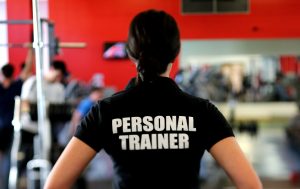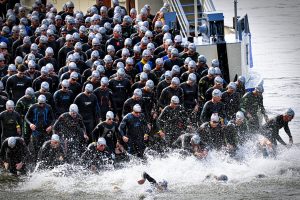Triathlon Tech: Essential Devices, Tools, and Apps to Enhance Training and Performance
Technology plays an integral role in triathlon training, offering athletes and coaches detailed data on performance, progress, and recovery. The right devices and training apps can help you optimize your training, track improvements, and make data-driven decisions. This post covers a wide range of devices, training tools, and apps designed to enhance triathlon performance, including insights on what to look for based on your specific needs and goals.
1. Essential Triathlon Devices
From tracking heart rate to measuring power and cadence, tech devices are invaluable for monitoring your training metrics. Here’s a look at some key devices and how they can benefit your training.
Running Watches
Features: Modern running watches are multi-functional, tracking distance, pace, heart rate, GPS, elevation, and even VO2 max. Many models include multi-sport modes, making it easy to track the entire triathlon in one device.
Integration and Data: Running watches from brands like Garmin, Coros, and Polar integrate well with training apps like Garmin Connect, Strava, and TrainingPeaks, enabling you to analyse performance data and sync with other devices like heart rate monitors.
Battery Life: Battery life is a critical factor, especially for long-distance events. Most newer watches will cover even a full Ironman distance race. There are also variants with solar charging for longer times between charges.
Pros and Cons:
- Pros: Highly accurate data, GPS tracking, water-resistant models available, integration with apps.
- Cons: High-end models can be costly; battery life may need frequent charging for full GPS use.
Bike Computers
Features: Bike computers track essential metrics like speed, distance, time, cadence, power, and navigation. Most models include mapping capabilities and connect to smart trainers, power meters, and apps like Zwift.
Popular Models: Garmin, Wahoo, and Hammerhead offer robust options with customisable displays, smart routing, and weather-resistance.
Battery Life and Reliability: Garmin Edge and Wahoo ELEMNT models typically provide 12-20 hours of battery life, suitable for long training rides. Reliable performance across weather conditions makes them suitable for year-round training.
Pros and Cons:
- Pros: Integrates with power meters, heart rate monitors, GPS, and training apps; weatherproof.
- Cons: High-end models can be expensive, some learning curve for setup and use.
Power Meters
Features: Power meters measure the direct force you exert on the pedals, providing real-time wattage output. They help you gauge effort, manage intensity, and track improvements in strength and endurance. Available as pedals, cranks, or rear hubs, power meters can suit different preferences and setups.
Popular Models: Favero (pedals), Garmin (pedals), and Quarq (crank-based) are popular among triathletes.
Data Interpretation: By tracking power in watts, you can calculate Functional Threshold Power (FTP), a benchmark for setting training zones. Power-based training allows precise pacing, especially in longer races.
Battery Life and Reliability: Pedal-based models generally last 30-50 hours on a charge, while crank-based models can exceed 100 hours. Calibration can be required to ensure accuracy.
Pros and Cons:
- Pros: Accurate measure of output; useful for pacing, especially in long races.
- Cons: Expensive; calibration needed periodically.
Cadence Meters
Features: Cadence meters track pedal revolutions per minute (RPM), helping you maintain an optimal cadence for efficient energy expenditure. Many bike computers and running watches now include cadence tracking, making separate devices optional.
Data Interpretation: Ideal cadence typically ranges from 80-100 RPM. Tracking this can help improve pedal stroke efficiency and prevent early fatigue.
Integration and Battery Life: Cadence sensors connect with most bike computers and watches and typically last 200-400 hours on a coin battery.
Pros and Cons:
- Pros: Affordable; easy to integrate with other devices.
- Cons: Basic data output; limited on its own without pairing with other metrics.
Heart Rate Monitors
Features: Heart rate straps (e.g., Garmin, Polar) provide accurate heart rate data, often more reliable than wrist-based monitors, which can be less accurate during intense activity.
Data and Integration: Heart rate monitors are highly compatible with training apps and devices, offering insights into intensity, calorie burn, and heart rate zones.
Battery Life: Chest straps can last 300-500 hours on a coin battery.
Pros and Cons:
- Pros: Accurate; helps manage training intensity.
- Cons: Some may find chest straps uncomfortable; battery replacement required.
Newer Devices: Foot Pods, Smart Goggles, and Rings
- Foot Pods: Devices like the Stryd foot pod track running power, pace, and form metrics like ground contact time and stride length. Integrates with most running watches and apps.
- Smart Goggles: FORM Swim Goggles display swim metrics directly in the field of view, allowing real-time data like lap count, time, and pace.
- Smart Rings: Rings like Oura measure sleep, readiness, and recovery, useful for tracking overall health and fatigue.
Pros and Cons:
- Pros: Innovative data for specialized needs; can improve form and tracking.
- Cons: Costly; limited utility if not used consistently.
2. Training Apps and Tools
Training apps provide structure to your workouts, allow for real-time data sync, and help you stay on track with goals. Here’s a look at the top apps for triathlon training.
TrainingPeaks
Features: TrainingPeaks is a data-rich app designed for tracking, analyzing, and planning training. Coaches use it widely to assign workouts, track progress, and adjust training based on metrics.
Integration: Syncs seamlessly with most devices, allowing data from your watch, power meter, and heart rate monitor to aggregate in one place.
Pros and Cons:
- Pros: Comprehensive; integrates with nearly all devices.
- Cons: Subscription cost; can be data-heavy for beginners.
Strava
Features: A social network for athletes, Strava tracks routes, pace, and elevation, and provides segments to compete against others. Useful for tracking performance and adding a social element to training.
Pros and Cons:
- Pros: Social aspect; easy-to-use interface.
- Cons: Limited analysis tools compared to other training apps.
Garmin Connect
Features: A powerful app for Garmin device users, Garmin Connect tracks comprehensive workout data, recovery, sleep, and stress, syncing seamlessly across Garmin devices.
Pros and Cons:
- Pros: Free; integrates all Garmin device data.
- Cons: Limited compatibility with non-Garmin devices.
Zwift and Rouvy
- Zwift: A virtual training platform that allows users to cycle and run on simulated routes with other athletes around the world. Gamifies training to make workouts more engaging.
- Rouvy: Similar to Zwift but focuses more on real-world routes with augmented reality features, offering unique experiences on famous courses.
Pros and Cons:
- Pros: Fun, engaging; great for indoor training.
- Cons: Requires a smart trainer; monthly subscription.
COROS
Features: The COROS app connects to COROS devices, offering unique insights on training load, fatigue, and recovery. Excellent battery life and simple navigation appeal to ultra-distance athletes.
Pros and Cons:
- Pros: Lightweight and long battery life; user-friendly interface.
- Cons: Limited device compatibility beyond COROS products.
3. Indoor Trainers: Wahoo, Wattbike, and Tacx
Indoor trainers offer a controlled environment for bike training, allowing you to ride year-round regardless of weather.
Wahoo (e.g., Wahoo KICKR)
Features: Wahoo’s smart trainers offer accurate power measurement, gradient simulation, and resistance control. Integrates with apps like Zwift and TrainerRoad for interactive training.
Pros and Cons:
- Pros: Reliable, high-quality; accurate power measurement.
- Cons: Expensive; requires dedicated space.
Wattbike
Features: Wattbike is an indoor smart bike with real-time performance feedback, focusing on pedaling efficiency. Provides accurate power and cadence data, making it ideal for dedicated triathlon training.
Pros and Cons:
- Pros: Highly accurate; excellent for pedaling efficiency.
- Cons: Large footprint; more expensive than other trainers.
Tacx (e.g., Tacx Neo)
Features: Tacx offers silent, direct-drive trainers with road feel and gradient simulation. Syncs with major training apps, providing an immersive experience.
Pros and Cons:
- Pros: Quiet; realistic feel.
- Cons: Expensive; requires assembly.
Integrating Devices, Apps, and Data into a Training Plan
Each device and tool plays a role in providing the data necessary to optimize your training. Here’s how they work together to contribute to a cohesive training plan:
- Data Collection: Devices like heart rate monitors, power meters, and cadence sensors track effort, speed, and efficiency, while apps like TrainingPeaks collect and store this data.
- Performance Analysis: Training apps allow you to analyze trends, identify strengths and weaknesses, and make data-driven adjustments. Metrics like heart rate zones, power thresholds, and cadence help tailor training intensity.
- Adaptive Training: Based on performance data, you or your coach can adjust the training plan. For instance, if your heart rate data shows early fatigue, you might reduce intensity or add recovery days.
- Real-Time Adjustments: Bike computers and running watches provide real-time data, allowing you to adjust pacing, cadence, and power output mid-workout or mid-race to stay within optimal zones.
- Monitoring Recovery: Devices like smart rings or watches that track sleep and recovery allow you to monitor overall health, helping prevent overtraining and supporting sustainable progress.
Conclusion: Optimizing Your Training with Technology
The right tech can elevate your triathlon performance, offering detailed insights, optimising workouts, and tracking recovery. From power meters to smart trainers and training apps, each device plays a role in achieving your goals. By integrating these tools into a well-rounded training plan, you can make informed adjustments, track progress, and set yourself up for race-day success. Embrace the technology, trust the data, and enjoy the journey to becoming a better, faster triathlete!



